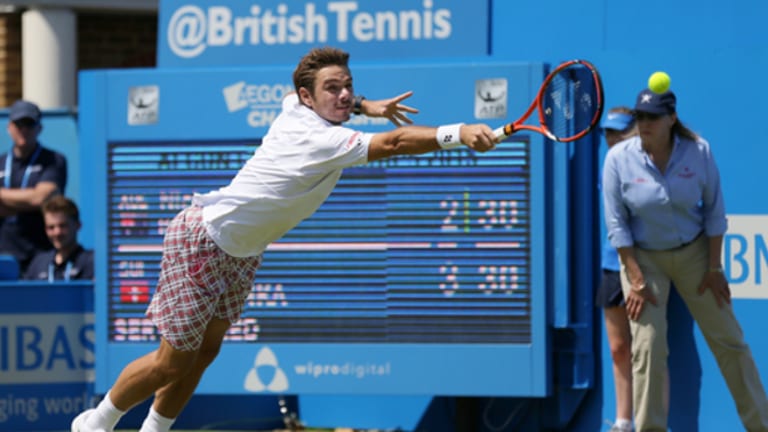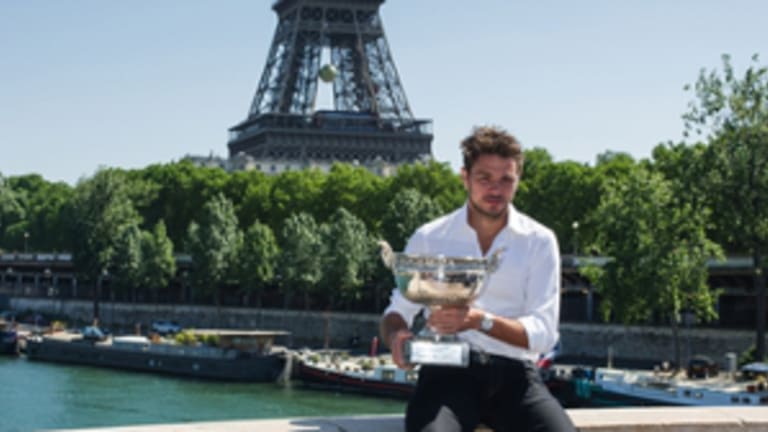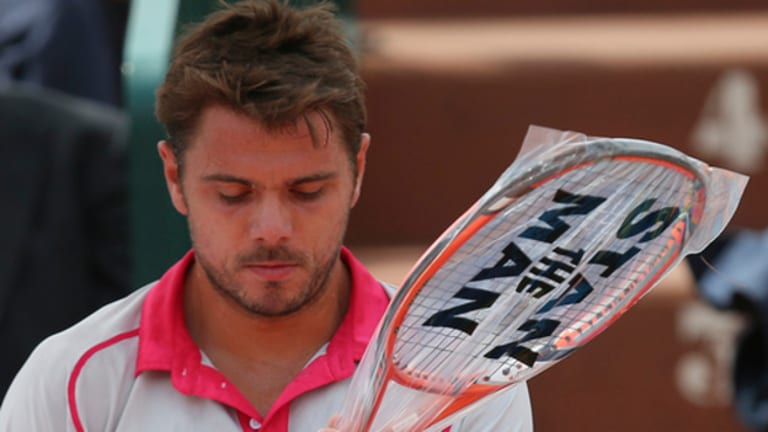LONDON—Tuesday was quite the day to have a ticket at the Queen’s Club in southwest London.
The sun was out, with the high temperature hovering around 75 degrees Fahrenheit—pleasant for fans and players alike. On display on center court were two members of the Big Four, Andy Murray and Rafael Nadal, plus Stan Wawrinka, U.S. Open champion Marin Cilic and last year’s tournament winner, Grigor Dimitrov. The Bulgarian trailed Sam Querrey by a set and a break, yet somewhat predictably finished off the American, 4-6, 6-3, 6-4.
While Nadal relinquished a break-of-serve lead himself, deep in the third set of his 6-3, 6-7 (4), 6-4 loss to Alexandr Dolgopolov—his killer instinct didn’t make the trip from Stuttgart—Wawrinka unexpectedly breezed past Nick Kyrgios.
Heading into the eye-catching first-rounder, if someone would have told you it would last just 49 minutes and be settled by one break per set, picking the Aussie would have made perfect sense. Kyrgios has, after all, already ousted Nadal and Roger Federer in his young, eventful career. And as Nadal learned last year at Wimbledon, when Kyrgios’ serve is working—especially on grass—manufacturing a break is difficult.
Further, no one would have begrudged Wawrinka a hangover after his recent exertions on clay at the French Open.
But it was the Swiss who progressed against an under-the-weather Kyrgios, 6-3, 6-4, lucky pajamas—or shorts—in tow.
“I’m playing well, obviously, and I’m happy with the way I played for the first match on grass,” Wawrinka said.


